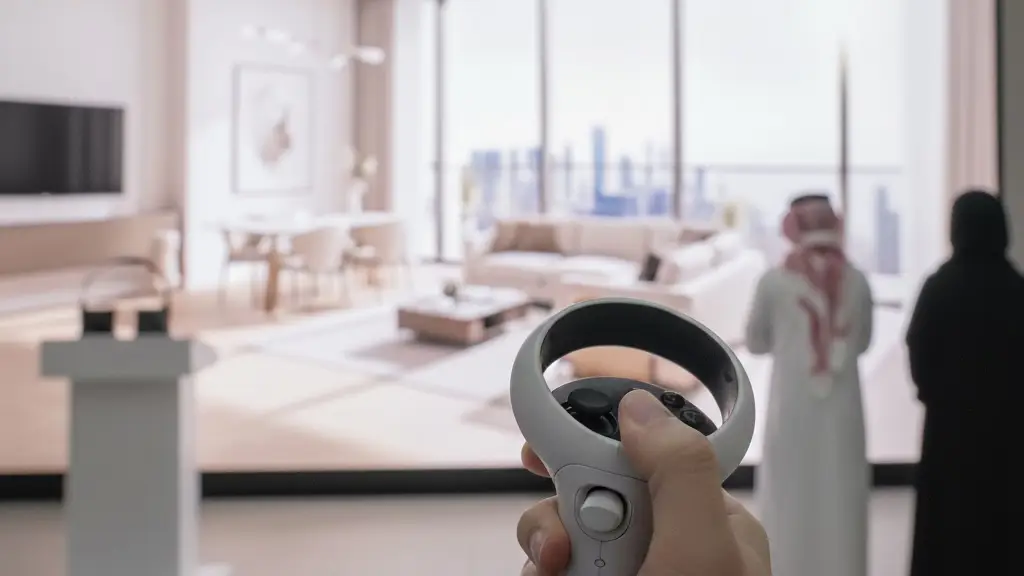
In the GCC, real estate launch events are not simple marketing milestones. They are orchestrated spectacles, often backed by millions spent on production, PR, and logistics. They are designed to impress buyers, excite brokers, and deliver momentum from day one.
And yet, for all the visual drama, fanfare and canapés, many buyers leave these events with questions, not clarity. They are impressed, but not always convinced. Curious, but not quite ready to commit.
So what separates a beautiful event from one that actually moves units?
It is not the flowers, the lighting, or even the popstar making a guest appearance. It is what happens when the buyer steps into the product for the first time, virtually.
Real estate developers in Dubai, Riyadh, and across the region know that first impressions matter. From cinematic masterplan unveilings to influencer-studded previews, these events are where reputations are made.
But at a deeper level, these moments are where belief is either established or lost.
We have spoken with dozens of developers and sales teams across the UAE and Saudi Arabia. One insight comes up again and again:
Impressing buyers is not enough. They need to feel it.
ROSHN Group, for example, used virtual reality as the final stage of the buyer journey during one of its recent launch events. It was not the main attraction. It was not the gimmick. It was the element that brought everything together.
After buyers understood the masterplan and shortlisted a unit type, they were invited to step inside their future home using a VR headset. That last emotional layer of light, space, flow, and lifestyle helped seal the experience.
This is where virtual reality real estate tools deliver value: not as distractions, but as decision drivers.
We have seen it too many times. The launch event is flawless. Everything is beautiful. Renders are printed. Brochures are stacked. Sales agents are smiling.
But then the questions come:
These are questions static materials cannot answer.
And in high-stakes markets like Dubai real estate or Saudi real estate, unanswered questions mean missed conversions. Especially when buyers have flown in for 48 hours, or when brokers are trying to facilitate family decisions on-site.
Virtual reality has a reputation problem. Some still see it as a gimmick or sideshow.
But in a properly designed sales flow, virtual reality is about clarity, emotion, and alignment.
Here is what immersive tools unlock:
VR removes imagination from the equation. Buyers understand layouts, flow, views, and proportions in seconds. They no longer need to guess where the corridor leads or how far the master bedroom is from the children’s bedroom.
This is where virtual reality real estate outperforms every other medium. When buyers see themselves in the space, walking through the living room, looking out from the balcony, they develop emotional ownership. That is what turns interest into urgency.
Most purchases are not made alone. Families, partners, and brokers often explore together. VR allows everyone to engage in the same experience, simultaneously or sequentially, and align on the decision.
International buyers visiting from abroad might only have a narrow window to choose. A well-designed immersive setup compresses decision timelines by days or even weeks.
When brokers can guide a buyer through the experience confidently, they move from messenger to closer. VR turns agents into storytellers who can show, not only tell.
VR works best when it is positioned at the right moment in the launch event journey.
Too early, and it feels like a toy. Too late, and momentum is lost. The most effective moment is when the buyer already understands the community and the options, and is now ready to feel the difference.
A high-conversion sequence typically looks like this:
This is how ROSHN Group approached one of its recent launches in Saudi Arabia. VR was not the headline. It was the final act. Buyers were guided through a journey, from an immersive room showing informational content, to a holographic masterplan, and finally to a VR section letting them explore the community and units. They left knowing what they liked, and feeling sure about it.
Immersive does not mean complicated. But it does require thoughtful execution. Here is what a successful launch-event VR setup usually includes:
When all the above come together in a coherent strategy with practiced execution, is when results start showing up.
A successful VR activation does not end when the doors close. That same virtual reality experience can become:
With the right setup and strategy, this becomes a sales asset that drives bookings for weeks and months afterwards.
Buyers do not remember your pitch. They remember how it felt. They remember the view from the balcony. The kitchen in soft daylight. The scale of the living room. The surprise of how spacious the bedroom was.
Today’s GCC buyers are spoiled for choice, with hundreds of new launches every year. First impressions play a key role in differentiating your project from all the others, and ensuring that it stays top of mind and heart.
When implemented effectively, virtual reality activations and other similar immersive sales setups are part of a broader move toward buyer-centric, experience-first sales.
That is how you turn first impressions into first sales.
Whether you are preparing for a flagship project in Dubai or launching a new community in Riyadh, a well-designed VR setup can elevate your brand and accelerate your bookings.
Book a free 15-minute activation strategy call today to learn how it can help you sell more, faster.